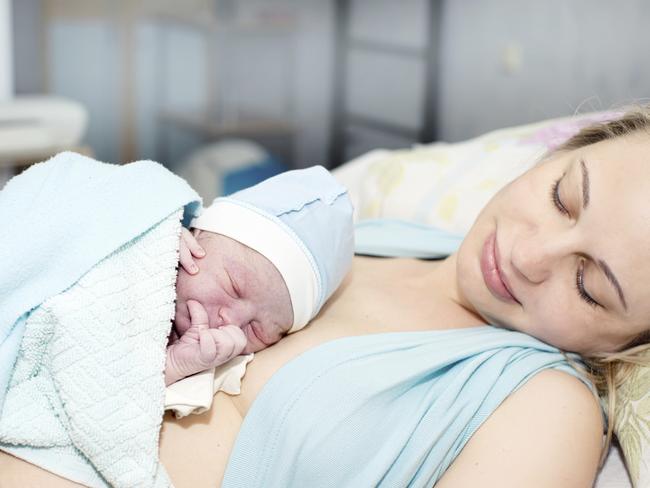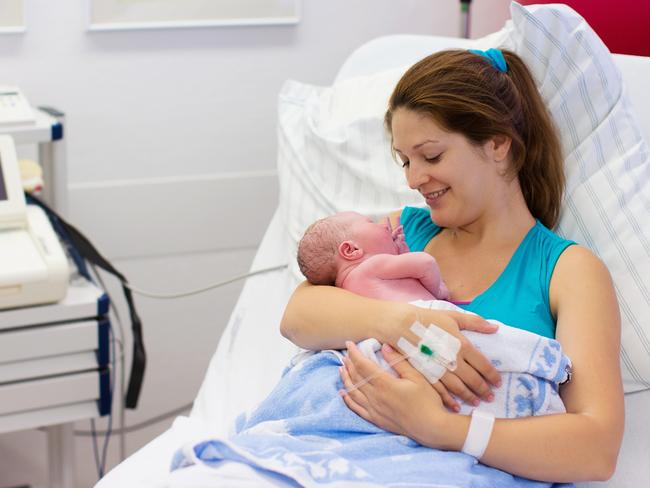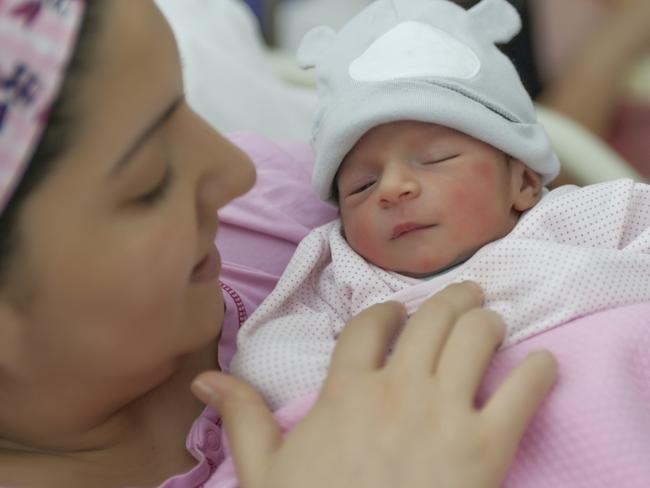Bombshell report commissioned by Nursing and Midwifery Board of Australia reveals workforce in crisis
Australian midwifery is in “crisis” as insiders lift lid on “widespread” staff shortages, “poor” patient care and wards at risk of closure.

Victoria
Don't miss out on the headlines from Victoria. Followed categories will be added to My News.
Australia’s midwife workforce is “in crisis”, a bombshell report has warned, and will not have the numbers to provide “quality midwifery care” to mums and babies without “urgent action”.
The startling research, commissioned by the Nursing and Midwifery Board of Australia, also revealed that a third of current burnt-out midwives were considering leaving – and if they did – the impact would be “catastrophic”.
Despite the nation’s birthrate falling to a record new low, the national regulator found that there are not enough midwives or students in the pipeline to meet future demand and there are already “widespread localised staffing shortages”.
The Board’s Midwifery Future report, set to be released in Canberra today, called for more than 30 urgent reforms across the sector, warning “change is needed”.

“Continuing to do the same and expecting different results is no longer possible,” the report said.
“Without significant action soon, the number of midwives will be insufficient to provide quality midwifery care to women, newborns and families in Australia.”
The report, led by the respected Burnet Institute, found while the number of registered midwives was technically increasing, only a fifth were working full-time and a third were aged over 55.
Researchers surveyed more than 3000 midwives, finding many of those thinking about leaving were well below retirement age, while student numbers were “inadequate”.
Respondents also reported burnout and anxiety while, when asked if their maternity ward was fully staffed, just 2.2 per cent of midwives in a manager position said yes.
“A strong sense of frustration was clear in the responses, relating to being unable to practise quality midwifery, and seeing women and babies receiving poor care,” the report said.
One respondent considering leaving cited the “constant stress of caring for the women and babies while not giving the best of care I know they need”, while another flagged “safety concerns for staff and patients”.

The report warned maintaining the “numbers, diversity and quality” of the midwifery workforce was “key to the ongoing provision of safe and effective maternity care”.
Board Chair adjunct Professor Veronica Casey said midwives played a “vital role in maternity care” and needed “urgent support to ensure they can continue to be everywhere they are needed”.
The researchers found localised shortages – while seen across all areas of the workforce and a global issue – were worse in regional and rural areas.
This raised concerns about ward closures – which would force women to travel further to give birth – with one midwife describing regional and rural settings as “becoming untenable to run”.
Other workers surveyed said “chronically understaffed” post-natal wards were relying on non-midwives – such as doulas, paramedics and nurses – to fill the gaps.
Problems regarding professional indemnity insurance and midwives’ ability to attend home births — amid reported increases in “free birthing” — were also raised.
The report’s recommendations included boosting midwifery students by 20 per cent, improving workplace flexibility and conditions and ensuring midwives are involved in maternity services decision making and leadership.
It called on health services to offer all women access to continuity of midwifery carer models, where one midwife or small group of known midwives care for a woman from pregnancy to the post-natal period.
It said this model had better patient outcomes, and was recognised as “the professional standard” in similar countries, but access in Australia was varied.

“There seems to be a disconnect between what women want and what health systems intend to provide,” the report said.
Lead author Burnet Institute Professor Caroline Homer said this was the moment “to do something differently”.
Prof Casey said the Board was focused on “championing” the report’s recommendations. “With sustained commitment, investment and collaboration between Australian governments, employers, the higher education sector and professional bodies, we will be able to grow our midwifery workforce,” she said.
Federal Assistant Health Minister Ged Kearney said ensuring the care of a midwife is available to all Australian mothers “won’t be achieved easily”, but the report’s recommendations were the “first step”.
A Victorian government spokeswoman said the state’s services were “already some of the best and safest globally”, and they had set up a new taskforce to strengthen them.


